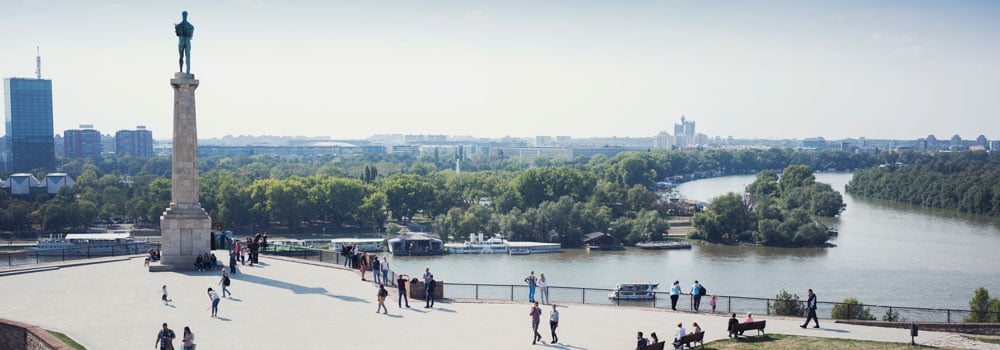Affordable, compact and easy to get to, Serbia has all the practical elements of a family holiday covered.

But how does it match up to its more beachy Balkan neighbours when it comes to fun? It might not have sand and sea, but sun’s not an issue and rolling hills, lush countryside, lakes, rivers and a healthy scattering of interesting towns and villages more than make up for a lack of surf. And the cities are completely unique: Belgrade’s an energetic and live in the moment capital with more than enough happening on its brilliant waterfront to give seaside greats like Dubrovnick a run for their money; and Novi Sad in the north’s as well known for huge music festivals as graceful Austro-Hungarian architecture these days. Serbia’s not quite a secret, but it’s not quite discovered yet either, so go see for yourself, soon.
Direct flights to Belgrade from the UK all year round take less than three hours.
Landlocked Serbia doesn’t have seaside, but Belgrade’s Ada Ciganlija on the banks of the River Sava is not only a great city beach, it’s one with a Blue Flag.
Serbia has five national parks including Djerdap on the Romanian border and 20,000ha Tara National Park, famous for its bears.
Kopaonik, Serbia’s southern ski resort, has 70km of runs, an extensive lift network and snow cover from December to May.
Serbia has over 60 nature reserves, four mountain ranges and almost 300 natural phenomena.
There are five UNESCO World Heritage sites in Serbia including the 12th century Studenica Monastery in Kralijevo.
The 2800km Danube Bike Trail runs through both Belgrade and Novi Sad.
Serbia’s city’s aren’t huge and walkability is part of their charm. If you get lost in either Belgrade or Novi Sad, remember the mighty Danube’s always a failsafe compass point. Bus and rail services operate across most of the country – trains are very basic and journeys can take quite a bit longer than scheduled. If you’re visiting national parks, touring towns and villages and travelling between cities, driving’s the best option. Roads are generally good, but signposting is often limited in rural areas and you need to keep an eye on winter weather reports.